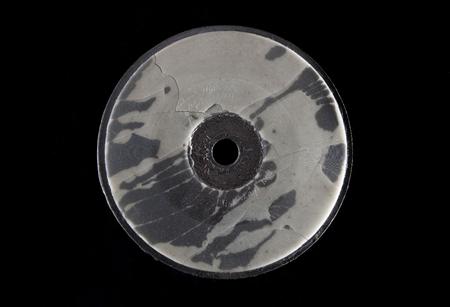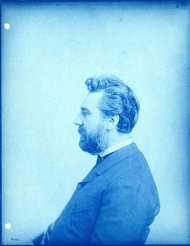Alexander Graham Bell speaks, and 2013 hears his voice
By Deborah Zabarenko | Reuters – 15 hrs ago
By Deborah Zabarenko
WASHINGTON (Reuters) - Nine years after he placed the first telephone call, Alexander Graham Bell tried another experiment: he recorded his voice on a wax-covered cardboard disc on April 15, 1885, and gave it an audio signature: "Hear my voice - Alexander Graham Bell."
The flimsy disc was silent for 138 years as part of the Smithsonian Museum's collection of early recorded sound, until digital imaging, computer science, a hand-written transcript and a bit of archival detective work confirmed it as the only known recording of Bell's voice.
Carlene Stephens, curator of the Smithsonian's National Museum of American history, first saw this disc and nearly 400 other audio artifacts donated by Bell when she joined the museum in 1974, but she didn't dare play them then.
"Their experimental nature and fragile condition ... made them unsuitable for playback," Stephenssaid by email.
"We recognized these materials were significant to the early history of sound recording, but because they were considered unplayable, we stored them away safely and hoped for the day playback technology would catch up with our interest in hearing the content," she wrote.
That day came in 2008, when Stephens learned that scientists at the Lawrence Berkeley National Laboratory in California had retrieved 10 seconds of the French folk song "Au Clair de la Lune" from a 1860 recording of sound waves made as squiggles on soot-covered paper. That was nearly two decades before Thomas Edison's oldest known playable recording, made in 1888.
If the Berkeley scientists could coax sound out of sooty paper, Stephens reckoned, perhaps they could decipher those silent records she had guarded for decades.
She contacted Carl Haber at Berkeley and Peter Alyea, a digital conversion specialist at the Library of Congress. They chose six recordings from the collection, including the one that turned out to be the Bell audio, and made ultra-high-definition three-dimensional images of them.
The Berkeley lab's scanner captures gigapixels of information, and not just width and height but the depth of the grooves, with measurements down to 100 nanometers, or 250 times smaller than the width of a human hair, Haber said by telephone.
DEEP WIGGLES
Depth is important with these old recordings, Haber said, because a lot of the information about how it sounds is stored in the deep parts of the grooves.
"It's not necessarily a groove that wiggles from side to side, it wiggles up and down," he said. "If you just took a regular (two-dimensional) picture of it, you don't get the information you need."
Haber and Berkeley colleague Earl Cornell used an algorithm to turn that image into sound, without touching the delicate disc. The system is known as IRENE/3D, short for Image, Reconstruct, Erase Noise, Etc.
Most of the recording is Bell's Scottish-accented voice saying a series of numbers, and then dollar figures, such as "three dollars and a half," "seven dollars and 29 cents" and finally, "$3,785.56."
This suggests Bell was thinking about a machine for business recording, Stephens said.
"The recording on its own is historically interesting and important," Stephens wrote. "It answers questions about Bell personally - what kind of accent did he have? (he was a Scot who lived in England, Canada and the United States) ... How did he pronounce his middle name? ('Gray-hum' not 'Gram')."
The job of authenticating the disc began with a hand-written transcript of the recording signed by Bell (online at http://newsdesk.si.edu/photos/alexander-graham-bell-transcript-voice-recording).
In 2011, Patrick Feaster, an Indiana University sound-media historian, inventoried notations on the discs and cylinders in the Smithsonian's collection. Many were scratched on wax and all but illegible, Stephens recalled.
"We then matched up one wax-and-cardboard disc, from April 15, 1885," Stephens wrote. "When we recovered sound from the recording ... the content matched the transcript word for word. It is a recording of Bell speaking."
Similar scanners are used in quality assurance for micromanufactured products such as microchips, optical components and to assure the flatness of touch screens. Dentists use them to take three-dimensional pictures of cavities to aid in making custom fillings.
The Berkeley lab has worked with the Smithsonian and the Library of Congress to learn more about the earliest audio records, some on tinfoil or even paper. And while Haber and his colleagues now know how to authenticate the recordings, they cannot do all the records that may exist.
The Northeast Document Conservation Center in Massachusetts is working with the Berkeley lab on a digital reformatting service for early audio recordings. There could be as many as 46 million of these early recordings in the United States.
The Bell recording was made at a time of creative ferment, Haber said, as Bell, Edison and others invented devices to change the way Americans communicate.
"Those guys were creating the future," Haber said.
(Reporting by Deborah Zabarenko; editing by Marilyn W. Thompson and Jackie Frank) YAHOO NEWS



No comments:
Post a Comment